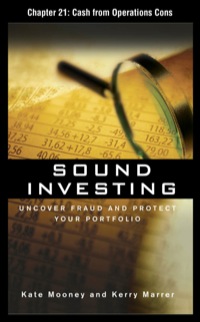Question
Problem 9.41 Setting Standards, Calculating and Using Variances Leather Works is a family-owned maker of leather travel bags and briefcases located in the northeastern part
Problem 9.41 Setting Standards, Calculating and Using Variances
Leather Works is a family-owned maker of leather travel bags and briefcases located in the northeastern part of the United States. Foreign competition has forced its owner, Heather Gray, to explore new ways to meet the competition. One of her cousins, Wallace Hayes, who recently graduated from college with a major in accounting, told her about the use of cost variance analysis to learn about efficiencies of production.
In May of last year, Heather asked Matt Jones, chief accountant, and Alfred Prudest, production manager, to implement a standard costing system. Matt and Alfred, in turn, retained Shannon Leikam, an accounting professor at Hardings College, to set up a standard costing system by using information supplied to her by Matts and Alfreds staff. To verify that the information was accurate, Shannon visited the plant and measured workers output using time and motion studies. During those visits, she was not accompanied by either Matt or Alfred, and the workers knew about Shannons schedule in advance. The cost system was implemented in June of last year.
Recently, the following dialogue took place among Heather, Matt, and Alfred
HEATHER: How is the business performing?
ALFRED: You know, we are producing a lot more than we used to, thanks to the contract that you helped obtain from Lean, Inc., for laptop covers. (Lean is a national supplier of computer accessories.)
MATT: Thank goodness for that new product. It has kept us from sinking even more due to the inroads into our business made by those foreign suppliers of leather goods.
HEATHER: What about the standard costing system?
MATT: The variances are mostly favorable, except for the first few months when the supplier of leather started charging more.
HEATHER: How did the union members take to the standards?
ALFRED: Not bad. They grumbled a bit at first, but they have taken it in stride. Weve consitently shown favorable direct labor efficiency variances and direct materials usage variances. The direct labor rate variance has been flat.
MATT: It should be since direct labor rates are negotiated by the union representative at the start of the year and remain the same for the entire year.
HEATHER: Matt, would you send me the variance report for laptop covers immediately?
The following chart summarizes the direct materials and direct labor variances from Novem- ber of last year through April of this year (extracted from the report provided by Matt). Stand- ards for each laptop cover are as follows:
a. Three feet of direct materials at $7.50 per foot
b. Forty-five minutes of direct labor at $14 per hour

In addition, the data for May of this year, but not the variances for the month, are as follows:
Laptop covers made in May 2,900 units
Total actual direct materials costs incurred $68,850
Actual quantity of direct labor cost incurred 8,500 feet
Total actual direct labor cost incurred $25,910
Total actual direct labor hours 1,837.6 hours
Actual direct labor cost per hour exceeded the budgeted rate by $0.10 per hour
Required:
1. For May of this year, calculate the price and quantity variances for direct labor and direct materials.
2. Discuss the trend of the direct materials and labor variances.
3. What type of actions must the workers have taken during the period they were being observed for the setting of standards?
4. What can be done to ensure that the standards are set correctly? (CMA adapted)
Month November December January February March April Actual Cost (Direet Materials + Direct Labor) $150,000 155,000 152,000 151,000 125,000 115,000 Direct Materials Price Variance $10,000 U 11,000 U 10.100 U 9,900 U 9,000 U 8,000 U Direct Materials Efficiency Variance $5,000 F 5,200 F 4,900 F 4,500 F 3,000 F 2,000 F Direct Labor Rate Variance S100U 110 U 105 U 95 U 90 U 90 U Direct Labor Efficiency Variance $5,000 F 6,500 F 7,750 F 6,950 F 8,200 F 8.500 FStep by Step Solution
There are 3 Steps involved in it
Step: 1

Get Instant Access to Expert-Tailored Solutions
See step-by-step solutions with expert insights and AI powered tools for academic success
Step: 2

Step: 3

Ace Your Homework with AI
Get the answers you need in no time with our AI-driven, step-by-step assistance
Get Started


